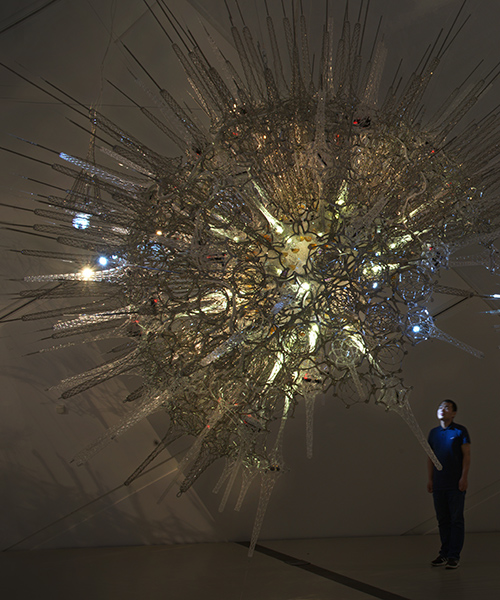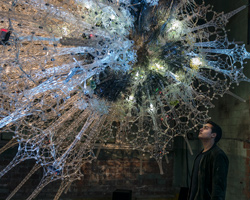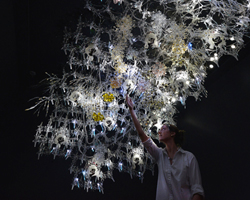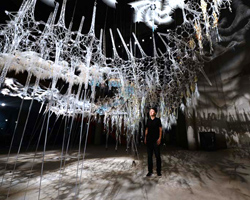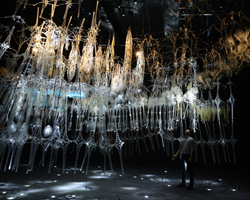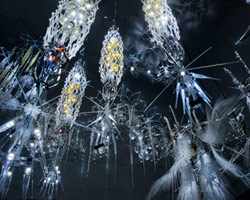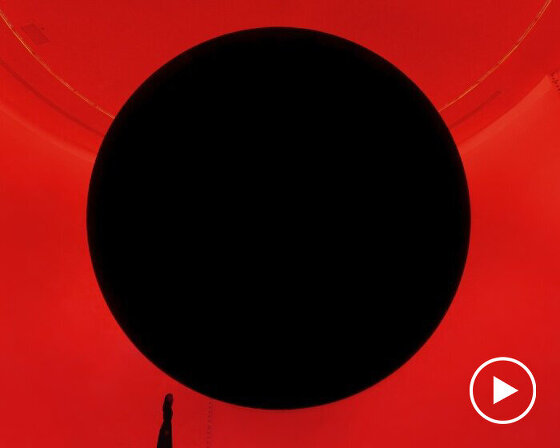philip beesley, professor in the school of architecture at the university of waterloo, and the living architecture systems (LAS) group present the exhibition ‘philip beesley: transforming space.’ the show, held at the royal ontario museum in toronto, is a collaboration with fashion designer iris van herpen’s exhibition ‘iris van herpen: transforming fashion.’ beesley exhibits two new sculptural works — ‘aegis’ and ‘noosphere’ — with the retrospective couture ‘aeriform’ dress created by both beesley and van herpen.
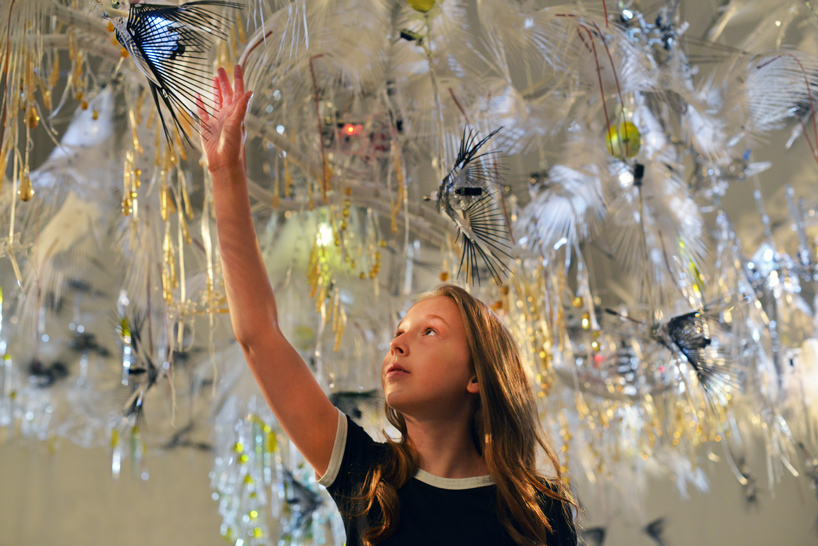
the interactive canopy ‘aegis’ by philip beesley, royal ontario museum, toronto, canada, ©las/pbai, 2018
the exhibitions hinge on the collaborative aeriform dress — a cloud-like garment composed of laser-cut, hand molded metal lace — which beesley and van herpen developed together for paris couture week in 2017. framing the retrospective garment are two new sculptural environments which combine synthetic biology, artificial intelligence, mechanics, sound, light, and filtering systems. the work of philip beesley and the LAS evolves through constant collaborative exchanges with an international network of scientists, engineers, and artists. beesley and his collaborators employ neuroscience engineering techniques to explore how functions like ’empathy and care’ can create sculptural works that function as ‘living labs.’
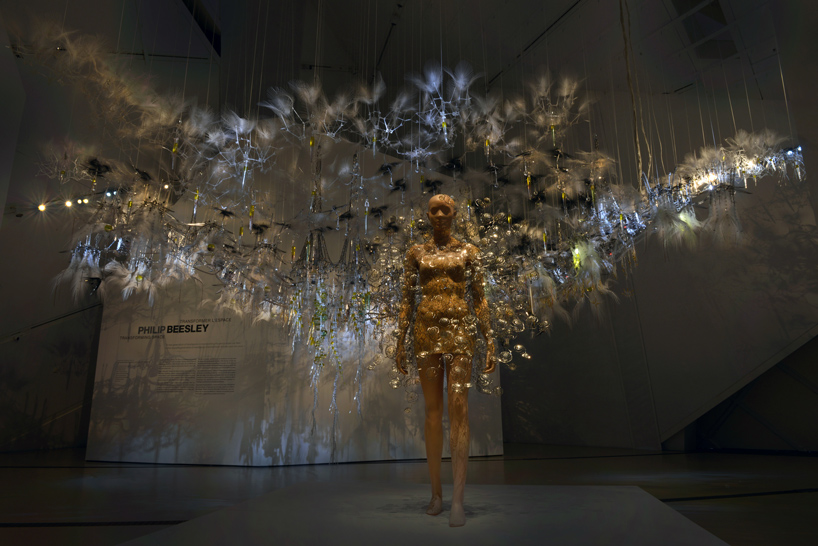
the dome dress, a collaboration by iris van herpen and philip beesley surrounded by the canopy ‘aegis’ by philip beesley, royal ontario museum, toronto, canada, ©las/pbai, 2018
the first ‘living lab’ — aegis — is named for the fertile veil from ancient greek mythology that protects and shelters all life. the sculptural canopy that cradles the aeriform dress is composed of a matrix of responsive fronds that cover an innovative flexible structural mesh embedded with artificial intelligence. as the mylar fronds gently stir the air, they activate microprocessors and sensors organized in dense meshes that can learn, adapt, and even show curiosity as they evolve. the artificial intelligence in the sculpture is programmed with a curiosity-based algorithm causing the system to constantly search and find new patterns of behavior.
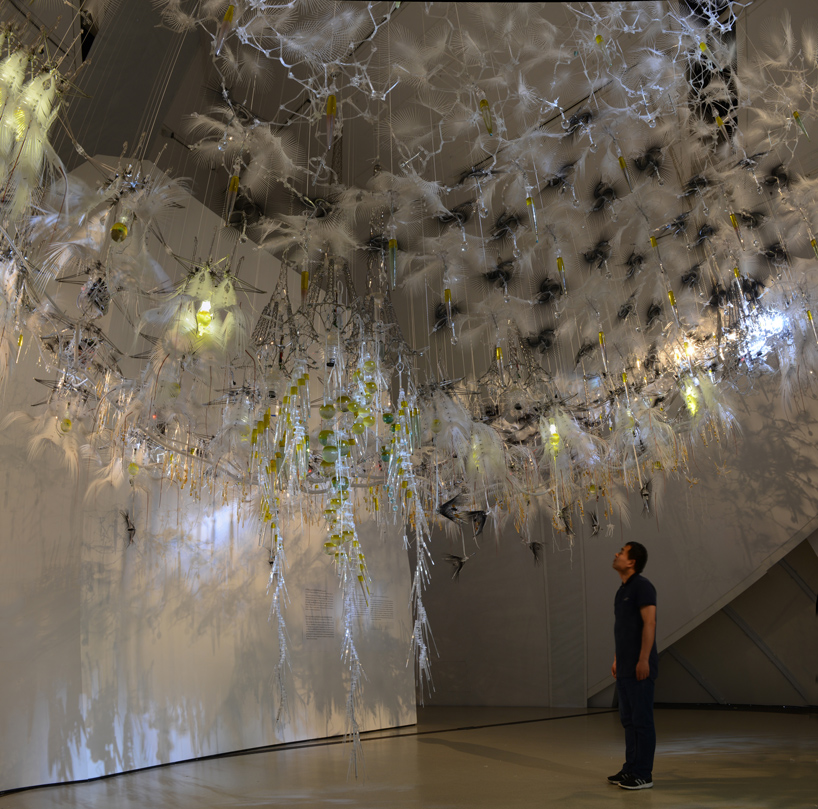
the interactive canopy ‘aegis’ by philip beesley, royal ontario museum, toronto, canada, ©las/pbai, 2018
alongside the canopy, the delicate steel and acrylic skeletal mesh of the spherical volumes comprising noosphere house vessels containing prototype cells that display certain life-like properties. combinations of oil, inorganic chemicals, and water-based solutions stimulated by led lights, create chemical skins within these cells that might lead to new kinds of self-renewing skins for future buildings. the structural mesh of the sculpture uses overlapping strands within conical stem-shaped cells that possess extraordinary strength using minimal amounts of material.
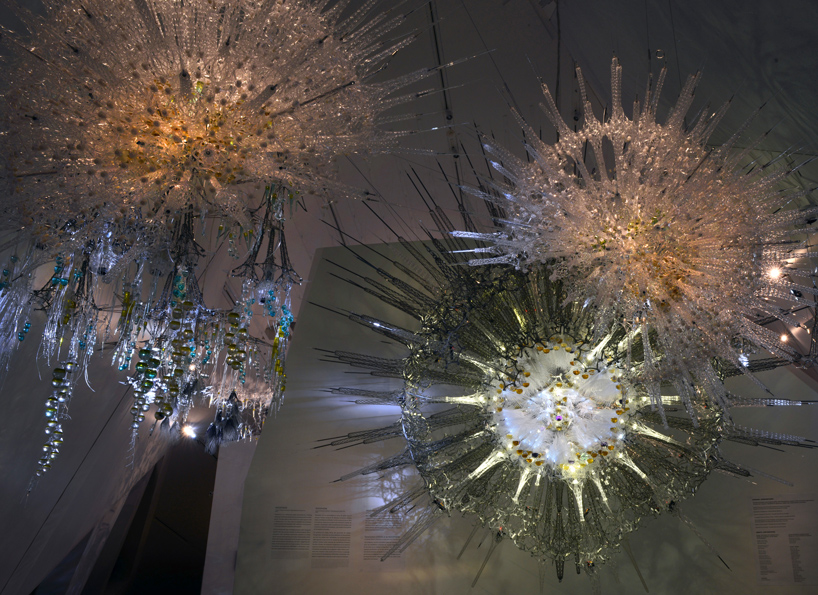
the immersive sculpture ‘noosphere’ by philip beesley comprised of stainless steel and acrylic mesh spheres, royal ontario museum, toronto, canada, ©las/pbai, 2018
the exhibition opened to the public at the royal ontario museum on june 2, 2018 and runs until october 8, 2018.
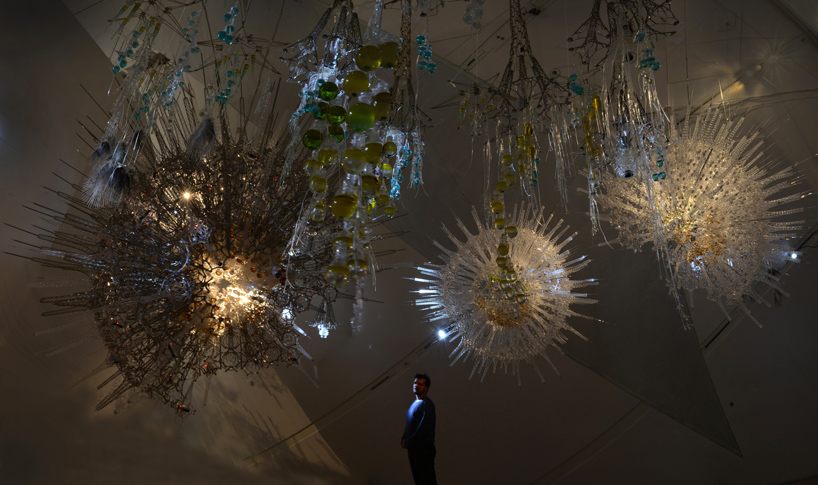
the immersive sculpture ‘noosphere’ by philip beesley comprised of stainless steel and acrylic mesh spheres, royal ontario museum, toronto, canada, ©las/pbai, 2018
philip beesley: transforming space project team
sound composition salvador breed
engineering director rob gorbet
project lead farzaneh victoria fard
creative director karen zwart hielema
production director gabriella bevilacqua
comptroller anne paxton
4dsound poul holleman
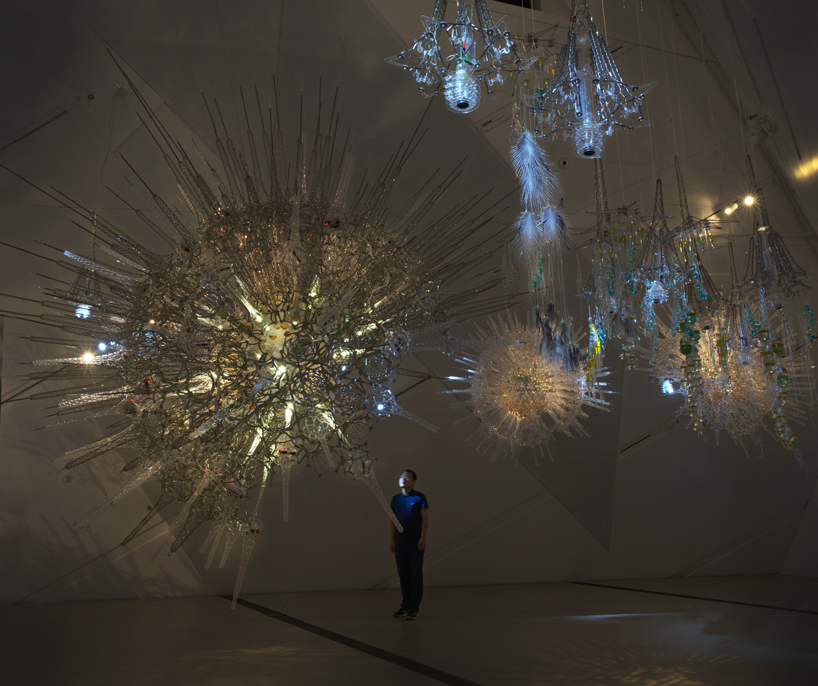
the immersive sculpture ‘noosphere’ by philip beesley comprised of stainless steel and acrylic mesh spheres, royal ontario museum, toronto, canada, ©las/pbai, 2018
